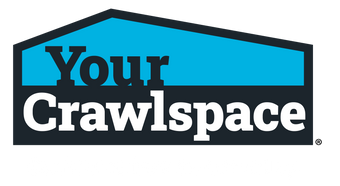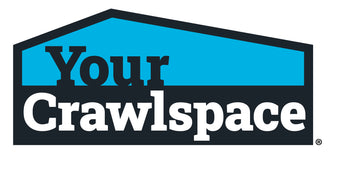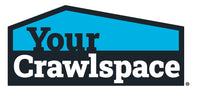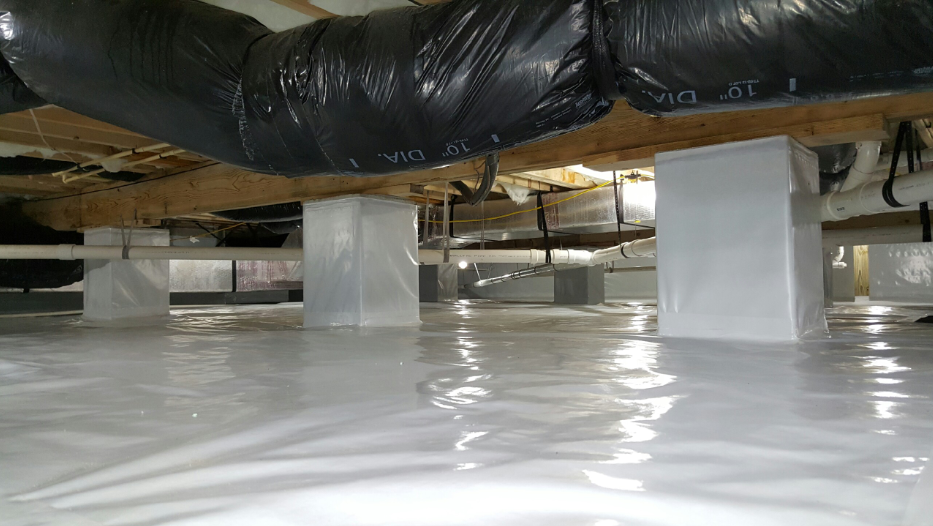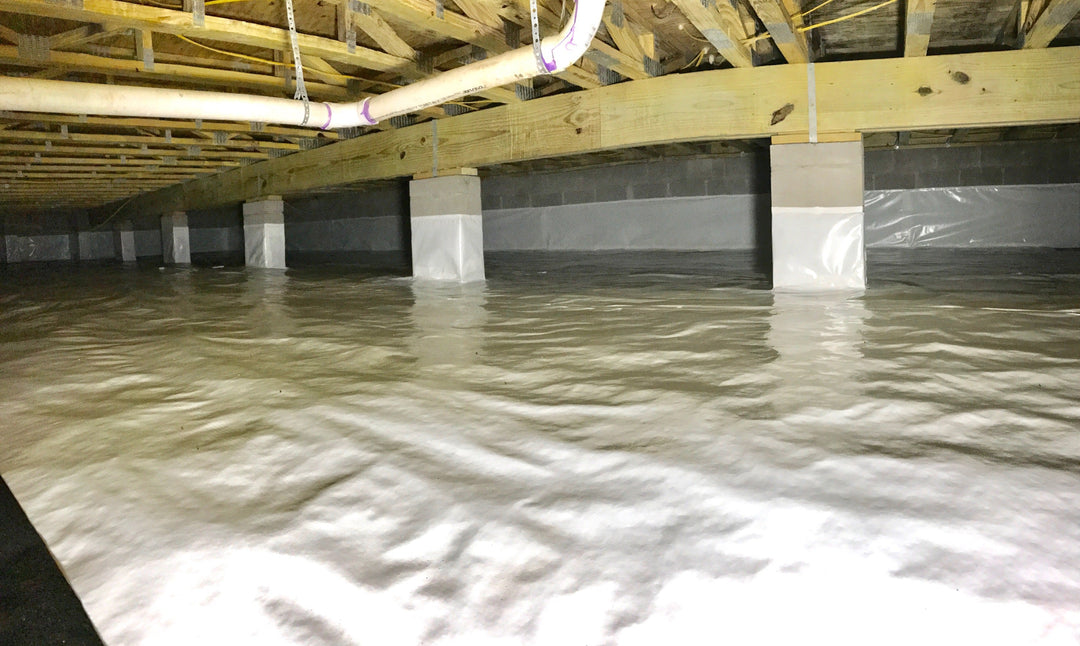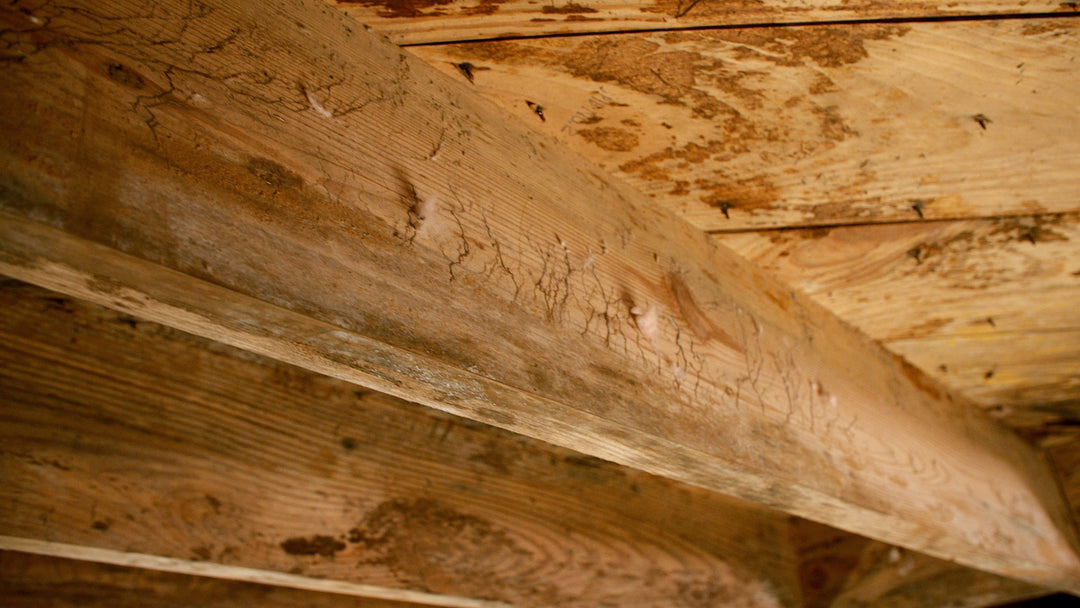Foundation Drainage Tips in a New or Existing Home
Tips from a Crawlspace Industry Expert
One of the first considerations before building a house is site location as it relates to drainage. Identifying the proper site location and getting a firm understanding of how water will be diverted away from the foundation is vital to prevent moisture issues in the future. The best time to consider foundation drainage is before the building process begins, as it is the least expensive way to solve the drainage question going forward.
Let’s dive a little deeper into common drainage issues and scenarios.
A Case Study on Poor Drainage
If the house already exists and there is an issue with the foundation drainage system, how can the foundation drainage problem be resolved? For the purpose of this blog, let’s assume the house is eight years old. It has a hollow block with brick veneer exterior cladding. The house is located on a lot that has a slight slope from left to right and a moderate hill located about 150 feet from the rear foundation wall. It is a crawlspace construction with the outside grade higher than the inside grade of the crawlspace with an average of 10 inches.
The homeowner is thinking about putting the house on the market and has had a home inspection performed to assess the marketability of the house. The inspector first notices the slope of the land and the hill in the backyard. The house has gutters and downspouts, but the rain runoff terminates at the exterior foundation wall. All the foundation vents are above outside grade level. There is moderate landscaping around the exterior of the house but none too close.
Then the inspector observes very wet, almost saturated, soft soil at the rear of the house next to the foundation wall and notices moss growing along the majority of the rear exterior foundation wall. These are signs of possible excess moisture inside the crawlspace, and there is a definite need to inspect further.
Once the inspector enters the crawlspace, he immediately observes standing water around the inside foundation wall on top of the footers and some pockets of pooling water on top of the moisture barrier. Knowing that the ground level inside the crawlspace is lower than the ground level outside, it’s noted there are high water marks on the hollow block foundation wall. This is even more evidence of poor drainage that could support moisture problems. Effloresces is evident on the rear inside foundation block wall. Wood moisture content ranges from a low of 20% to as high as 29% and fungal growth is active.
There is no doubt this house has a drainage problem that is supporting a moisture problem.
With a little more investigating, the inspector discovers there is a sump pump in the crawlspace. However, the pump is not working properly and is located in the middle of the crawlspace. There is absolutely no way possible for the water to be drained properly to the outside. Besides a major outside grading project that would be cost-prohibitive, what can the homeowner do to resolve this drainage dilemma?
Building a Foundation of Knowledge: What Are the Options?
Interior foundation drainage systems can work wonders in these post-construction situations where water is entering the crawlspace because of improper grades, downspouts emptying roof rain water next to the foundation, and low ground levels in the crawlspace allowing percolation from the higher ground levels outside.
There are several drain systems options available for use in evacuating water out of a crawlspace. The most common is a French drain. A French drain uses a 4-inch round corrugated black plastic pipe with perforations placed in a trench or ditch next to the foundation wall inside the crawlspace and covered with gravel. The water is collected in the piping and gravity diverts the water to a sump pump or a drain pipe leading away from the house through the foundation wall.
A sump pump is the preferred method of water evacuation because the force of the pumping action keeps the exit drain clear of debris. Using a drain pipe without a sump pump has the potential to become clogged with soil or debris and dam the water back into the crawlspace. In this case outlined above, a foundation drainage system with a properly placed and functioning sump pump is a good recommendation.
Another option is the finger drain method. A finger drain is a simple trench dug to carry water to a lower exiting area where the water is collected and evacuated to the outside using a sump pump or a drain pipe. This type of system is not very effective because the trenches tend to fill back in very quickly with soil.
Today, there is a third option that is becoming very popular: strip drains. These drains are 2 inches wide and 4 inches deep. This slim design only needs a narrow trench compared to the wider trench required for the traditional 4-inch round plastic pipe. New technology has given us a second alternative to heavy gravel normally used as fill: a new material made of Styrofoam. The strip drains are easier to install and have proven to be as efficient and effective as the traditional 4-inch piping.
Installing Your Crawlspace Drainage System
Installing any of the foundation drain systems discussed here is labor intensive. Most homeowners hire a professional to do the work. The working space is limiting and it takes a lot of good old-fashioned elbow grease to dig the trenches for the drainage system chosen.
After the trenches are dug, gravel or a fill of some sort needs to be placed around the piping to aid in the filtration. The pit for the sump pump must be dug and a sump bucket installed properly so the drain pipe can dump the water into the sump. The pump needs to be properly wired and secured with plumbing to the outside of the crawlspace.
The experts at Your Crawlspace have a strip drain system and complete sump pump kits that many skilled contractors rely on. And YCS has developed a trenching tool that makes digging the trench for the strip drain easier than using a shovel and pick in a tight crawlspace. YCS also has training and how-to videos available to assist you in understanding drainage and installation. Go to the Your Crawlspace website www.yourcrawlspace.com for more information!
Don Richards ACE, CPI
Don Richards Services, LLC
